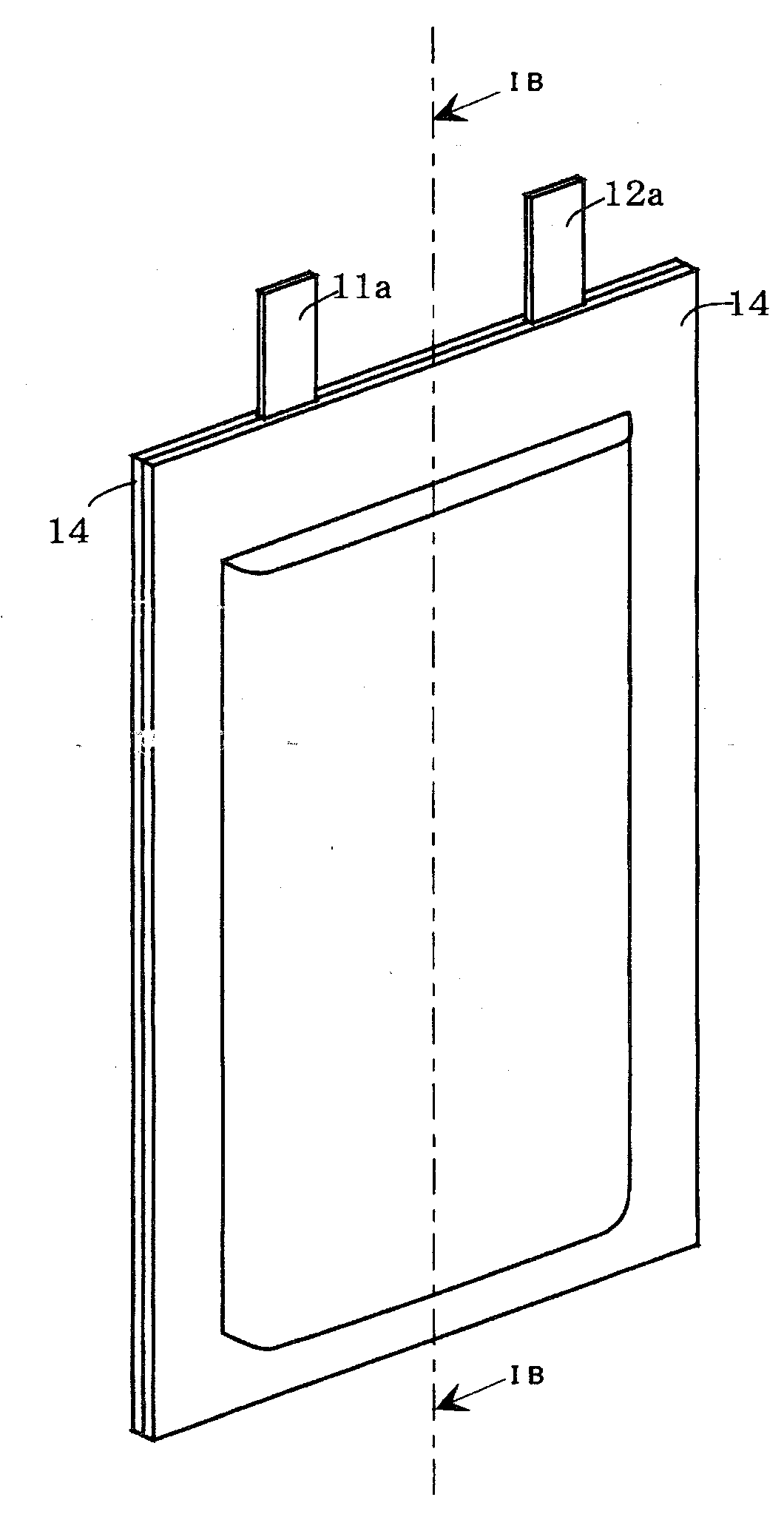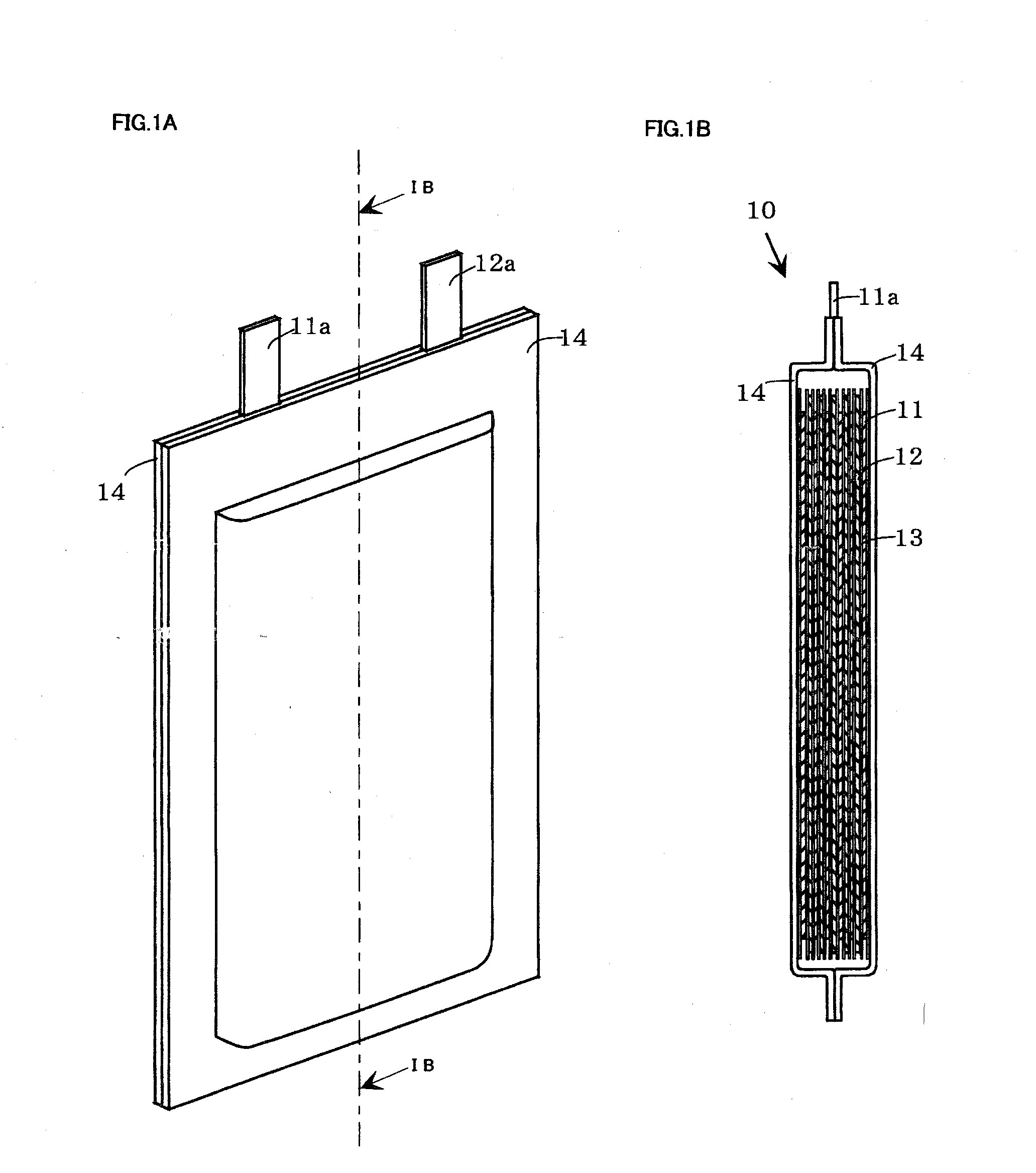Nonaqueous electrolyte secondary battery
a secondary battery and electrolyte technology, applied in the direction of non-aqueous electrolyte cells, electrochemical generators, non-conductive materials with dispersed conductive materials, etc., can solve the problems of poor battery safety, low flash point, poor cycle performance,
- Summary
- Abstract
- Description
- Claims
- Application Information
AI Technical Summary
Benefits of technology
Problems solved by technology
Method used
Image
Examples
Embodiment Construction
[0024]Next, the embodiments of the present invention are described with reference to FIG. 1. However, the invention is not limited to these embodiments at all and the invention can be embodied by appropriately altering the invention so long as the object of the present invention is not changed. FIG. 1 is a view schematically showing the nonaqueous electrolyte secondary battery of the present invention. FIG. 1A is a perspective view and FIG. 1B is a cross sectional view taken along the line IB-IB of FIG. 1A
1. Nonaqueous Electrolyte Secondary Battery
(1) General Constitution
[0025]In the nonaqueous electrolyte secondary battery 10 of the invention, as shown in FIG. 1, each belt-shaped separator 13 is interposed between each belt-shaped positive electrode 11 and each belt-shaped negative electrode 12, and not only are these parts wound in a spiral shape to prepare a spiral-shaped electrodes group, but also this spiral-shaped electrodes group is depressed into a flat shape and held in an ...
PUM
| Property | Measurement | Unit |
|---|---|---|
| flash point | aaaaa | aaaaa |
| thickness | aaaaa | aaaaa |
| thickness | aaaaa | aaaaa |
Abstract
Description
Claims
Application Information
 Login to View More
Login to View More - R&D
- Intellectual Property
- Life Sciences
- Materials
- Tech Scout
- Unparalleled Data Quality
- Higher Quality Content
- 60% Fewer Hallucinations
Browse by: Latest US Patents, China's latest patents, Technical Efficacy Thesaurus, Application Domain, Technology Topic, Popular Technical Reports.
© 2025 PatSnap. All rights reserved.Legal|Privacy policy|Modern Slavery Act Transparency Statement|Sitemap|About US| Contact US: help@patsnap.com



